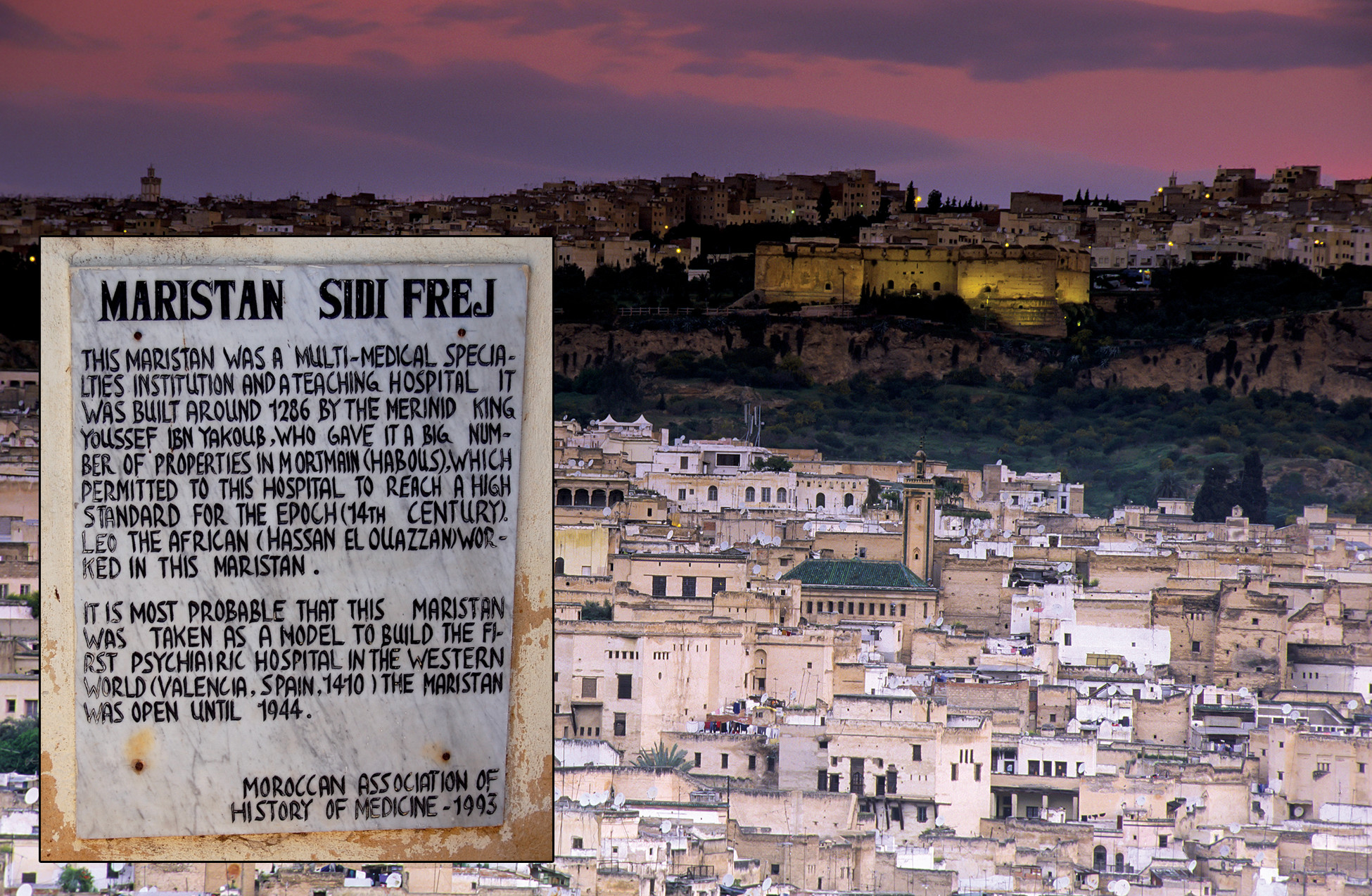One of the seminal events in the history of diagnosis and treatment of severe psychiatric illness was the understanding of psychotic symptoms such as hallucinations, delusions, and paranoid ideas as resulting from “sickness” rather than from supernatural causes. With this realization, patients were treated with medications, not tortured or killed or jailed. Among the earliest psychiatric hospitals in the world was one in northern Africa.
The word “maristan” is a contraction of a Persian word (bimarstan) meaning “the locus of sick people.” Maristans were medical institutions with four specialties: internal medicine, ophthalmology, traumatology, and psychiatry. Over the centuries, they progressively restricted their work to mental patients only. As far as we know, the first historically known maristan in the Arab-Islamic region is the one in Baghdad during the reign of Harun Al Rashid. In Morocco, the first was built in Marrakech during the Almohad dynasty in the 12th century. It was described by Abdelwahad Al Murrakushi, a contemporary historian, as an exceptional medical institution, supported personally by the sultans.
In Fez, during the Merinid dynasty another maristan, called “Sidi Fredj,” was built in the 13th century by the sultan Abu Yaqub (1286–1307). Leo Africanus (his original name was Hassan Al Wazzan) worked in this maristan for 2 years as a secretary at the end of the 15th century. Adjacent to the Sidi Fredj maristan, herb shops allowed the preparation of many kinds of medications for centuries, and they still exist today. Medicine at that time was completely Hippocratic and never mentioned irrational causes of diseases, as is evident in medical books of famous physicians such as Ibn Rushd (Averroes) or Ibn Zohr (Avenzoar), who lived in Marrakech during the 12th and 13th centuries.
Father Galaberto Jofre, a Spanish priest, came to “Africa” twice at the beginning of the 15th century to pay ransoms for Christian war prisoners and bring them back to Spain. He most probably visited Fez, which was the capital of Morocco at that time, and its maristan. In 1409, after having witnessed aggression against a mental patient in the street, he advocated for the creation of an asylum (the first) for mental patients across Christian Europe, in Valencia, Spain. A number of maristans already existed in Muslim Spain, in Cordoba and in Granada, from the 9th century on. The new Valencia institution opened in 1410.
The decline of the economic situation of Morocco during the centuries to follow, as well as the setbacks of philosophy and Hippocratic medicine, degraded the conditions of all maristans in Morocco. When Lwoff and Serieux, two French psychiatrists, visited them in 1911, they found a terrible situation that had nothing to do with the golden ages of the centuries before. They were mostly places where all unwelcomed people in society were locked up, much nearer to jails than to therapeutic institutions. Such incarceration is reminiscent of what has been happening here in the United States (
1).
The maristan Sidi Fredj in Fez continued to take care of mental patients until 1944, when it burnt to ashes. One of the remaining humanistic approaches to mental patients, however, remained until the end: a musical session of Andalucían music once a week was performed to relieve the suffering of mental patients.
The building of the maristan is now used as a commercial mall in the old medina of Fez. The lesson, of course, is that psychiatric hospitals in the 21st century should be focused on actively treating the illness that warrants hospitalization—rather than warehousing, jailing, or just “observing” patients and then discharging them after a few days.
Acknowledgments
The photograph of the plaque was taken by Dr. Glick. Photo of Fez: © Zlikovec |
Dreamstime.com.


